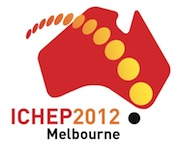Speaker
Dr
Svetlana Barkanova
(Acadia University (CA))
Description
High-precision electroweak experiments such as parity-violating Møller scattering can provide indirect access to physics at multi-TeV scales and play an important complementary role to the LHC research program. However, before physics of interest can be extracted from experimental data, electroweak radiative corrections, which can significantly reduce the cross-section asymmetry, must be calculated with an unprecedented completeness and accuracy. Although the two-loop corrections are strongly suppressed relative to the one-loop corrections, they can no longer be dismissed. We evaluate a full gauge-invariant set of one-loop and several types of the two-loop radiative corrections for the Møller asymmetry by combining two distinct but mutually-reinforcing techniques: semiautomatic, precise, with FeynArts and FormCalc as base languages, and “by hand”, with some approximations. For 11 GeV relevant for the MOLLER experiment planned at JLab, the results obtained by two approaches are in excellent agreement, which gives us assurance that our calculations are error-free. A possible way to incorporate new physics particles into theoretical predictions for the Møller asymmetry is briefly discussed at the end.
Authors
Aleksandrs Aleksejevs
(Memorial University of Newfoundland)
Dr
Svetlana Barkanova
(Acadia University (CA))
